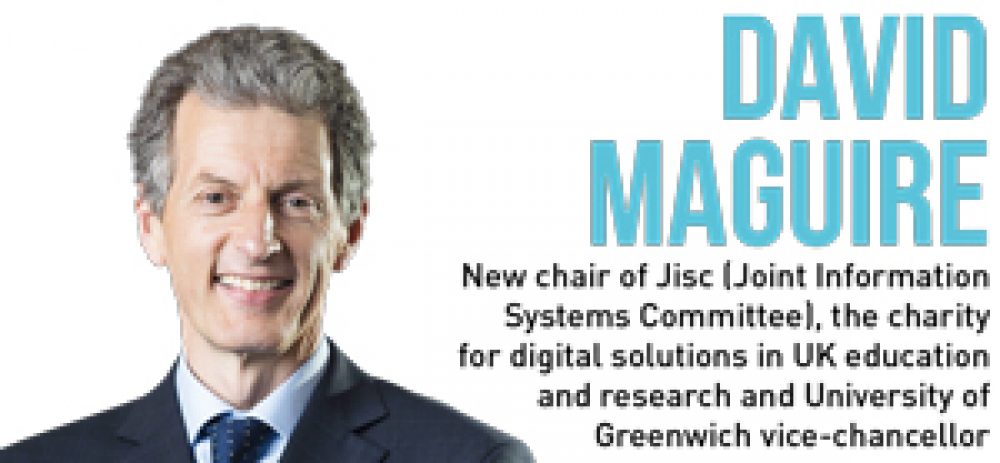David Maguire became the new Jisc chair last month and outlines for the first time his view of the FE sector and technology
ow can organisations leverage digital technologies to improve learning and teaching and equip learners with the skills they need for the future, under burgeoning cost pressures?
This is the big question facing UK education and research today, and one I am attempting to address in my new role as Jisc chair.
The FE sector in particular is facing a ‘do-or-die’ outlook when it comes to technology adoption. In this article I want to look at the challenges that learning providers are facing and what Jisc is doing to future-proof the sector, concentrating on three key areas.
First is the current austerity agenda, with the dual cost pressures of impending budget cuts under already high financial constraints hanging heavy over the sector.
‘Efficiency’ is a term generally treated with trepidation as cost-cutting in lieu of quality, but in our view efficiency means using technology to promote smarter working, increase productivity and engender cost savings.
I am committed to extending the excellent work Jisc has done to broaden access — providing thousands of free ebooks to FE and skills
One of the big areas Jisc is prioritising is shared services. For example, learning providers are having to house more data as their use grows, impacting on their electricity bills and taking up expensive estate. Shared data centres can solve this problem, and free up staff time to concentrate on core activities.
Getting access to high quality resources is also a concern for cash-strapped colleges. To this end I am committed to extending the excellent work Jisc has done to broaden access — providing thousands of free ebooks to FE and skills, creating tools such as the hairdressing training app, and offering resources like Digimaps for Colleges.
Second is the changing expectations of students. Today’s iPad generation has grown up with technology and expect it to be part of their normal everyday experiences.
Just as other sectors and industries are having to evolve their delivery models to incorporate digital, so too must education. Colleges need to understand what it is students actually want from their digital environment in order to meet their needs.
I see Jisc’s role as arbiter, steering the conversations between students and staff and offering solutions that meet the requirements of both. The digital student co-design project has made great progress in scoping out the current view of technology and where it could be improved. The next step is engaging students as partners to act as change agents and drive technology uptake.
The third and final driver is the pervasiveness of cloud services and digital personal computing such as smart phones and devices — both of which I see as having a profound impact on education delivery.
Cloud has already been widely adopted by the business world. While there is some ground to walk before we see education using it at the same level, when this switch does come it will allow organisations to be more flexible, adaptable and resilient to change. Jisc has been busy brokering deals with some of the world’s leading commercial providers; next comes dissemination of practice and providing support for effective use.
Internet-enabled devices, on the other hand, are increasingly seen as learning tools. Curious individuals are able to pursue their interests whenever and wherever they are, using mobile devices. Building on my previous point around expectations, educators need to meet them there, offering suitable resources and content and supporting access through inclusive BYOD policies.
Since the Wilson Review of Jisc in 2011 — which highlighted both the invaluable nature of Jisc as a national resource, but also emphasised the need for it to simplify and reorganise its structure and processes to continue to deliver for the sector — significant steps have been made to evolve our offer.
A key priority for me is to establish a sustainable funding model for Jisc customers, so that they are able to continue to benefit from all the activities I mentioned above, and more.









Your thoughts